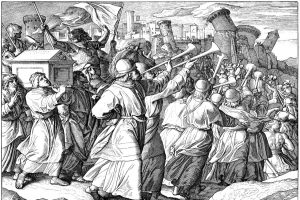In the world of biblical studies, scholars and laypeople alike tell us over and over that the absence of evidence is not the same thing as evidence of absence — and with good reason. Actually, they have two good reasons. First, it is true, in a technical sense. They are not identical propositions. And second, they have to keep telling us, because we keep not finding evidence.
Scholars of ancient history have long had to deal with the lack of evidence, and to determine what, if anything, it means. They ponder especially over expected evidence that refuses to be found.
What is and what is not
Consider, for a moment, what we mean by “describing” something. Its Latin root scribus, to write, reminds us that we’re writing down (de-) what something is. Yet each time we commit to writing what something is, we imply what it is not.
The act of describing is the act of drawing a circle on a Venn diagram. Things inside the circle are “X”; things outside the circle are not “X.” Recall that the Indo-European root of scribus is the word for “cut, separate, or sift.” To describe something is to scratch mentally a circle in which X resides.
Imagine that objects of type X are red. Therefore, a green object cannot be an X. We may find such statements a bit too dogmatic, and so we soften them — “All known objects of type X are red.” “We do not expect to find green instances of X.”

You will recognize this immediately as an inductive argument, as we’re trying to build a model that accounts for and describes the properties of objects of type X, via a process of investigating known instances. In the real world, people used to say that all swans are white, which led to the classic “surprise” at finding the first black swan.
What did you expect?
However, I would again draw your attention to a key concept in this discussion: expectation. People expected the next swan they saw would be white, because all previous swans they had encountered were white. European and American archaeologists in the late 19th and early 20th centuries expected to find lots of tangible evidence for the United Kingdom of David and Solomon. The books they held to be true history (1 and 2 Samuel, 1 and 2 Kings, 1 and 2 Chronicles) led them to expect it.
But then the unexpected happened. They kept not finding evidence. What did that mean? Did the evidence disappear? Were we extremely unlucky in our searches? Continue reading “Dealing with Silence and the Absence of Evidence in an Age of Resurgent Orthodoxy”
